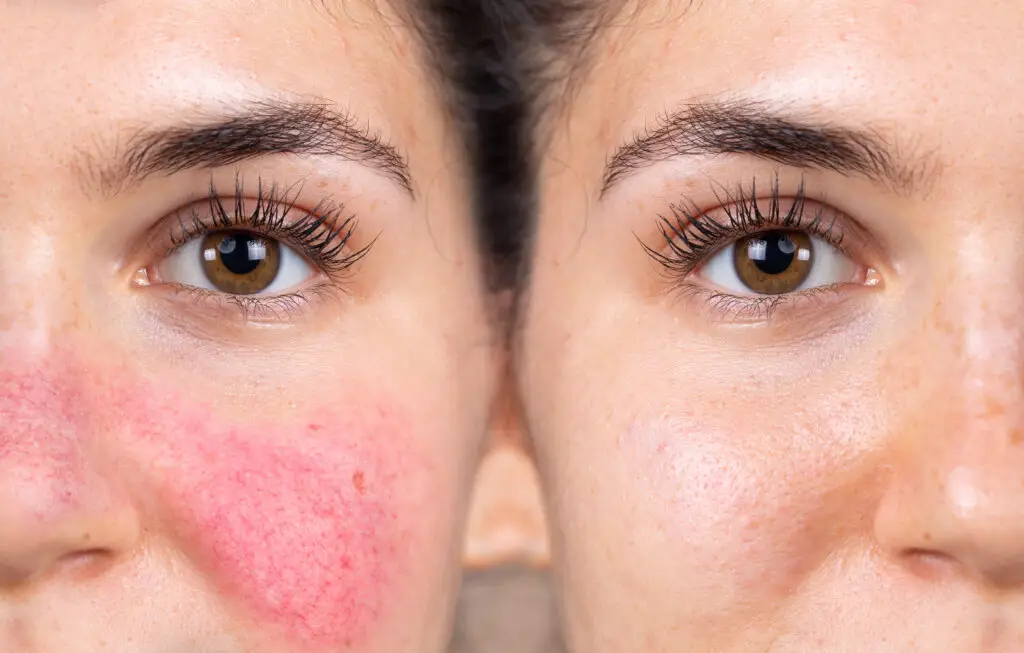- Medical
Rosacea
Understanding Rosacea
Rosacea is a common, chronic inflammatory skin condition that tends to flare and subside over time. It most often affects the central face and can be mistaken for acne, which can delay effective care. Although the exact cause is not fully understood, rosacea appears to involve the skin’s immune response, blood vessel reactivity, and the skin microbiome. Demodex mites and certain bacteria may contribute to flares for some patients, and eye involvement can occur with or without visible skin changes.
Signs and Symptoms
Rosacea often begins with facial flushing, followed by persistent redness on the cheeks, nose, chin, and forehead. Small visible blood vessels may appear, and inflammatory bumps or pustules can develop. Skin can feel sensitive, with burning, stinging, or dryness. Some patients experience thickening of the skin and enlarged pores, most commonly on the nose. Ocular rosacea can cause watery or bloodshot eyes, grittiness, burning, light sensitivity, and styes.
Symptoms can flare with heat, sun exposure, spicy or acidic foods, hot beverages, alcohol, intense exercise, temperature extremes, and emotional stress. Certain medications that affect blood vessels can also worsen redness. Identifying personal triggers is an important part of long term control.
Diagnosis
Diagnosis is based on a detailed history and clinical examination. At Heritage Dermatology, we evaluate the skin and eyes, review potential triggers and medications, and rule out conditions that can mimic rosacea. Research has explored possible links between rosacea and gastrointestinal factors such as small intestinal bacterial overgrowth. If appropriate, we will discuss these considerations and coordinate care.
Treatment Options
Rosacea management is tailored to the pattern of symptoms and your skin type. Many patients benefit from a combination of therapies.
Topical medicines: Metronidazole, azelaic acid, and other prescription topicals can reduce inflammation and visible bumps.
Oral therapies: Low dose antibiotics and other agents may calm inflammatory flares.
Laser and light treatments: Vascular lasers and intense pulsed light can target persistent redness and visible vessels.
Ocular care: Warm compresses, eyelid hygiene, artificial tears, and targeted medications help manage eye symptoms.
Gentle routines support treatment results. We recommend non-fragranced cleansers, barrier-supportive moisturizers, and daily broad-spectrum sunscreen. Avoid harsh scrubs, astringents, and hot water. Keeping a simple trigger diary can help refine your plan and reduce flare frequency.
Our Approach
Your care begins with a clear diagnosis and education, followed by a stepwise plan that balances results, comfort, and downtime. We adjust treatments as your skin changes and coordinate care for ocular symptoms when needed. The goal is steady improvement in redness, sensitivity, and overall skin comfort.
If facial redness or sensitive, acne-like breakouts are affecting your daily life, schedule a visit with Heritage Dermatology. Together we will create a personalized plan to calm flares, protect your skin barrier, and help you feel comfortable and confident in your skin.

